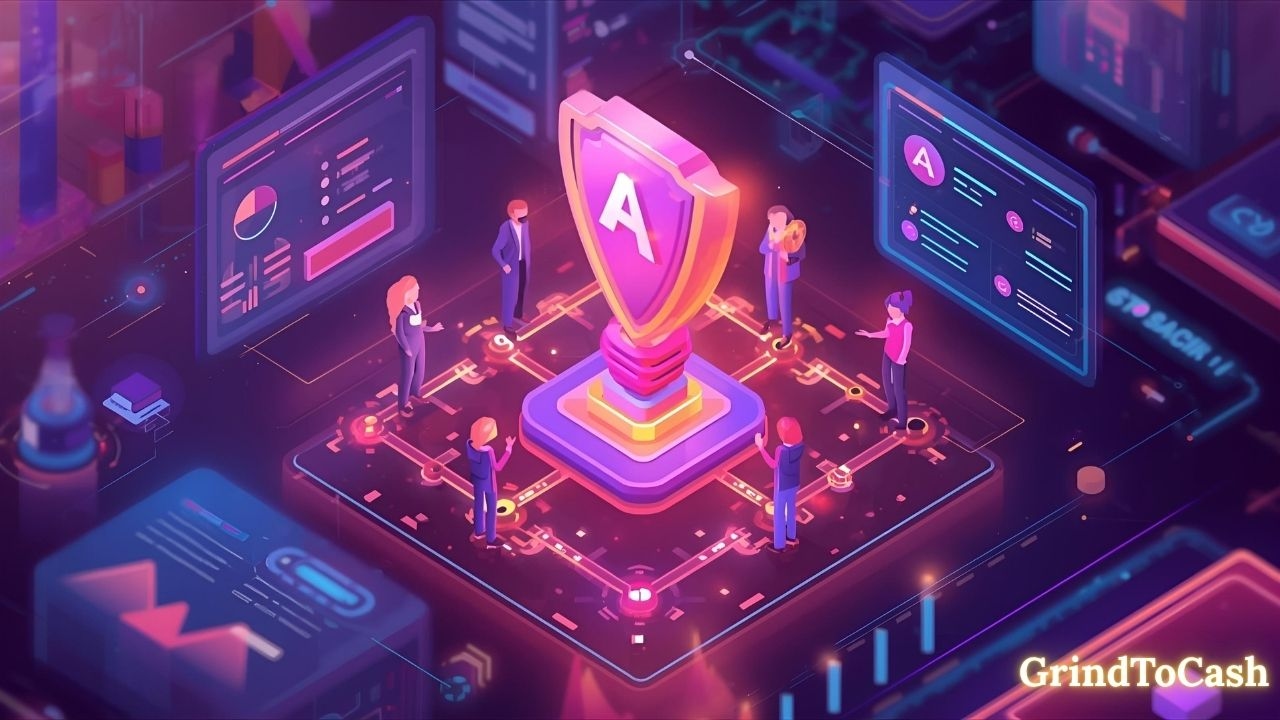Unlock the Future of Web3 Innovation with Astar (ASTR)
Astar is a Polkadot-based smart contract platform built to connect developers, users, and applications across chains. It supports both EVM and WASM runtimes, and it focuses on practical incentives for builders so that real dApps can grow and scale.
By Yaser | Published on October 6, 2025

What Astar Is and Why It Matters
Astar is a multi-purpose blockchain designed to be a “smart contract hub” within the Polkadot ecosystem. In simple terms, Astar gives developers familiar tools (EVM) while also offering modern, fast runtimes (WASM). As a result, teams can port Ethereum code or build with WebAssembly. Because of this dual approach, Astar lowers friction for projects that want cross-chain reach, and therefore it helps drive real Web3 adoption rather than isolated experiments.
Core purpose and audience
Astar’s main audience is developers and teams who need multi-chain compatibility. For example, studios that already use Solidity can deploy with EVM support, while web3 teams seeking performance or alternative languages can target WASM. Thus, Astar acts as a bridge that reduces rewrite costs and accelerates launches.
How Astar fits in Polkadot’s vision
Polkadot offers parachains for specialized tasks; Astar focuses on smart contracts and developer tooling. As a parachain, it benefits from Polkadot’s shared security and interoperability. Therefore, projects on Astar can more easily communicate with other parachains and leverage Polkadot’s cross-chain message passing.
Real-world value proposition
In practice, Astar’s value comes from reducing adoption friction. Developers save time, users get better apps, and the network grows organically. Consequently, the ecosystem attracts tooling, wallets, and integrations that make daily Web3 use smoother.

History and Origins
Astar began as a project with roots in 2019 and later rebranded from earlier names as it matured into a Polkadot parachain. The team focused on interoperability and developer incentives from the start. Over time Astar moved from research and testnets into a public mainnet role, and it has continued to add features like dApp staking and multi-VM support to differentiate itself within the crowded smart contract landscape.
Early development and rebranding
Initially conceived in 2019, the project evolved through technical prototypes and community feedback. Rebranding and formal launches were part of the maturation process. This evolution helped the team refine priorities: developer ergonomics, incentives, and cross-chain tooling.
Parachain slot and ecosystem growth
Winning or securing a parachain slot (via Polkadot’s auction mechanisms) was a milestone for projects like Astar. That slot enabled production-grade deployments, on-chain governance, and stronger partnerships. As a result, more teams considered Astar for their smart contract needs.
Community and developer traction
From the beginning, Astar emphasized developer grants, tooling, and documentation. Over time these investments resulted in more dApps launching on the network, with contributors focusing on wallets, developer SDKs, and bridges.

Technology & Architecture: EVM, WASM, Parachain Design
Astar’s architecture mixes two important ideas: EVM compatibility and WASM support. This dual-stack approach means developers can choose the right VM for their needs. Technically, Astar operates as a Polkadot parachain, so it leverages relay-chain security and cross-chain messaging. Together, these elements create a flexible, high-utility platform for decentralized apps.
EVM compatibility: why it matters
EVM compatibility allows teams to use existing Solidity code and Ethereum tooling. This shortens development cycles, lowers migration risk, and increases the pool of available developers. Therefore, many projects can launch faster while retaining access to familiar libraries and audits.
WASM support: modern alternatives
WASM (WebAssembly) brings performance and language flexibility. Developers can write contracts in off-EVM languages for better performance or safety. Consequently, WASM opens Astar to new developer communities beyond the Ethereum stack.
Parachain benefits and interoperability
As a parachain, Astar inherits Polkadot’s routing and shared security. This makes cross-chain flows more reliable. For example, token bridges and messaging can connect Astar dApps with other parachains, which enhances composability across ecosystems.

dApp Staking: Incentives That Work
One of Astar’s defining features is dApp staking — a mechanism where token holders stake ASTR in support of dApps they believe in. In return, developers receive rewards that help fund growth and scale operations. This model directly ties economic incentives to useful applications, and it encourages long-term commitment from both users and builders.
How dApp staking functions
Users delegate or lock their ASTR to specific dApps. If a dApp attracts enough staked support, it receives inflationary rewards or protocol distributions. Thus, money flows toward useful, trusted applications instead of being spread thinly across low-value projects.
Benefits for developers
Developers get a steady funding source tied to user trust. This reduces dependency on early VC rounds alone, enabling sustainable growth. As a result, teams can focus on product quality and community rather than constant fundraising.
Risks and governance around staking
Like any economic mechanism, dApp staking needs guardrails. Poorly designed incentive curves or centralization of stake can create governance risks. Therefore, Astar continually refines parameters and introduces safeguards to align long-term incentives.

Tokenomics and the Role of ASTR
ASTR is Astar’s native token. It serves multiple roles: gas for transactions, staking for consensus and dApp support, and governance participation. Token supply and emission models have been discussed and updated by the project, and you should always check the official tokenomics documents for the current supply, vesting schedules, and governance proposals. This transparency helps users and builders plan long-term engagement.
Utility: gas, staking, governance
ASTR pays transaction fees and secures the network via staking. Moreover, token holders can vote on governance decisions that affect economic parameters and upgrades. Therefore, owning ASTR is both a utility and a governance stake.
Supply, allocation, and vesting considerations
Token supply details (initial supply, vesting, and allocations) shape long-term price and incentive patterns. Because vesting releases can affect circulating supply, investors and builders should track official schedules and proposals. Consequently, transparent tokenomics reduce surprises.
How tokenomics ties to network health
Balanced tokenomics reward contributors, bootstrap liquidity, and avoid runaway inflation. When incentives align with real usage, network services and dApps can scale sustainably. In short, healthy economics attract durable activity.

Ecosystem, Partnerships, and Recent Developments
Astar has steadily built partnerships, especially in gaming and IP integration. Notably, the project announced a strategic collaboration and investment from Animoca Brands in 2025, focused on Web3 entertainment and bringing IP to on-chain experiences. Partnerships like this position Astar as a strong home for consumer-facing games and entertainment dApps, and they signal growing interest from major Web3 players.
Gaming and IP partnerships
Collaborations with gaming groups and IP owners open new user channels. For instance, partners can bring well-known characters and franchises on-chain, which drives mainstream interest. As a result, Astar becomes attractive to studios that need both technical rails and market access.
Enterprise and developer tools
Astar invests in tooling, SDKs, and documentation to lower the barrier for enterprise devs. These investments speed integration and help enterprises prototype on the network quickly. Consequently, enterprise adoption becomes more plausible.
Community growth and events
Active developer grants, hackathons, and meetups strengthen the ecosystem. When communities are engaged, more dApps launch, and tooling evolves faster. Therefore, community investment is a key metric to watch.

How to Use ASTR: Practical Steps for Users and Builders
If you want to interact with Astar today, you can do so through wallets, staking interfaces, and developer tools. Beginners should start with a reliable wallet that supports ASTR and then learn about dApp staking and governance. Developers should review the docs, choose EVM or WASM based on needs, and test on testnets before mainnet deployment. This pragmatic path reduces risk and accelerates results.
For users: wallets, staking, and simple actions
Start by installing a compatible wallet and securing your seed phrase. Next, try small transactions to learn confirmations and fees. If you want passive yield, explore staking or dApp staking, but always read rules and expected returns first.
For builders: toolchain and deployment flow
Developers should pick a VM (EVM for Solidity compatibility or WASM for other languages), set up local tooling, and deploy to a testnet. After thorough testing, move to mainnet and consider applying for grants or participating in dApp staking programs to bootstrap traction.
Security and best practices
Follow smart contract audits, use hardware wallets for large funds, and monitor governance proposals. Because Web3 is fast-moving, ongoing vigilance and security hygiene are essential to protect funds and reputation.

Risks, Roadmap, and What Comes Next
No project is risk-free. Astar faces technical, market, and regulatory risks like any blockchain. However, the roadmap indicates continued investment in zkEVM, scaling, and developer experience. As long as Astar keeps focusing on real dApps, developer incentives, and robust security, its chance of long-term relevance improves. Watch official roadmap updates and governance proposals to track concrete milestones.
Technical and scaling risks
Upgrades and VM interactions can introduce complexity. Therefore, incremental testing and strong audits are critical. In addition, congestion or bridge issues may require on-chain adjustments.
Market and regulatory risks
Cryptocurrency markets are volatile, and regulations evolve. Projects that rely on gaming, NFTs, or payments may face jurisdictional rules. So, plan for uncertainty and stay informed about compliance.
How to follow roadmap and governance
Follow official channels, read governance proposals, and participate if you hold ASTR. Engagement gives you early insight into changes and the power to influence priorities. Consequently, active communities help steer networks toward useful outcomes.








